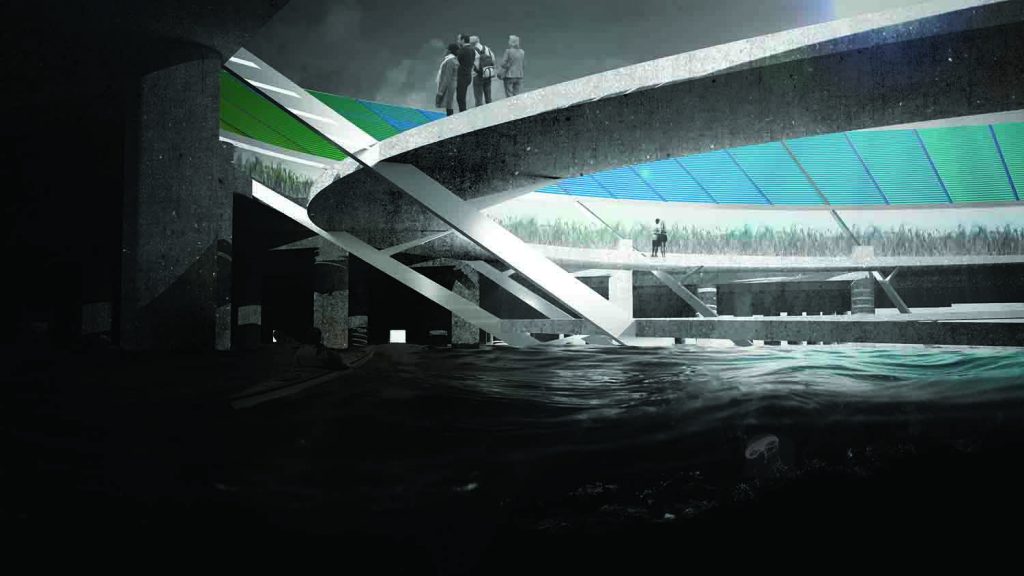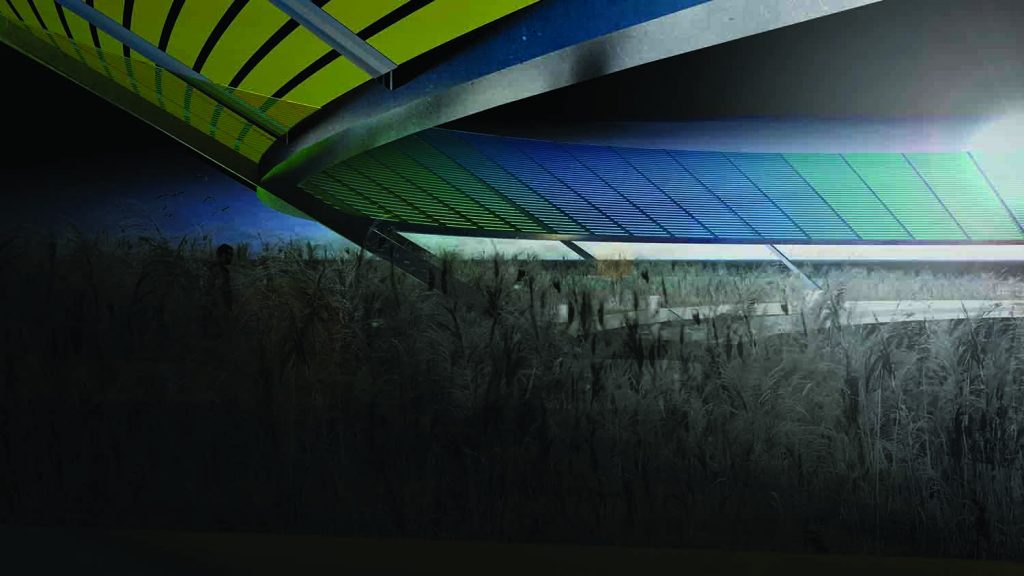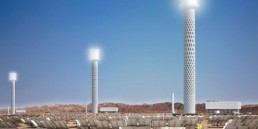
Artist Team: Anna McCuan, Jamieson Pye
Energy Technologies: dye-sensitized solar cells (DSSC)
Annual Capacity: 2,500 MWh
A Land Art Generator design competition for Melbourne
Before Anna McCuan and Jamieson Pye charted a single line, their mentor insisted they needed to know everything there is to know about Melbourne and St Kilda Triangle.
Frederick Pearsall from Georgia Tech encouraged his students to participate in the 2018 Land Art Generator design competition for Melbourne. Pye approached McCuan and the two of them asked Pearsall if he would be willing to mentor him, and the university agreed to give them each an architectural elective for creating their own energy-generating design from scratch. Fred agreed to help, but he pushed his students to really finesse their design.
“If we couldn’t answer one of his questions, he’d say, ‘well, you better go figure it out,'” McCuan tells me from Switzerland. Thanks to Fred’s “inquiring mind”, she and her classmate learned everything they could about the city’s culture, history, and geography. And through this, they came to understand that the City of Port Phillip occasionally has challenges with drought and flooding.
“There becomes this problem of not enough water, too much water… so we began to think about how Sentinel could be a small scale prototype of a larger scale solution,” says McCuan.
Their LAGI 2018 submission, Sentinel: Marking Energetic Flows Through Time, offers an artistic, yet practical means by which to manage water amid constant unpredictable flux. A substantial power plant capable of powering up to 500 Melbourne homes—one of the largest energy producers of this year’s 25 shortlisted designs—it is also a soul stirring sculpture that demonstrates how excessive use of fossil fuels and other greenhouse gas-emitting resources is playing out in our communities.
Sentinel optimizes the livability of the site at each point in time while offering solutions for its long-term survival amid environmental threats, particularly flooding caused by torrential rainfall, long term sea-level rise, and rising ambient temperatures. In order to situate the observer in relation to these threat factors, various parts of the artwork function to mark changes through time that are relatable to possible futures and the past: what is, has been, or might have been.
– Sentinel artistic narrative

Artist Team: Anna McCuan, Jamieson Pye
Energy Technologies: dye-sensitized solar cells (DSSC)
Annual Capacity: 2,500 MWh
A Land Art Generator design competition for Melbourne
How does it optimize livability?
First, by providing clean energy using dye-sensitized solar cells, which are highly efficient, even in low-lighting solutions, and colorful. This “crown” of elevated solar cells functions as a beacon, according to the designers’ narrative. “Through the window of the semi-transparent glass, the angled surface inverts the reading of plan and section, plotting the observer’s specific location in relation to the time of day and to the cardinal points.”
Meanwhile, from the Upper Esplanade, this vibrant “halo” frames views to the bay, creating a kaleidoscopic experience of the park beneath colored glass projections while still preserving sightlines to familiar vistas. Not to mention those solar cells can harvest 2,500 MWh annually to feed clean energy into the City grid. But for this team, there was so much more to their design than producing power.
“Obviously the energy generation is important in a Land Art Generator,” McCuan explains, “but we really didn’t start with that.”
A reed field filters stormwater runoff that collects in an inverted cone carved into the earth. The reeds and substrates purify the water in this giant cistern that acts as a temporary storage space for excess runoff during violent storms.
“Towards future use, the revealed sandstone reacts with rainwater or encroaching seawater, releasing CaCO3 which serves to reduce C02 absorbed in the water,” according to the artistic narrative. “Through time this scalable typology of ‘advanced weathering’ will reduce the acidity of the water, allowing the survival of native species in the Port Phillip Bay.”
LAGI co-founders Elizabeth Monoian and Robert Ferry say Sentinel has the potential to act as a landmark for a more considered, gentle way of interacting with our natural resources. They say it’s a design that gives back, while also bringing pause for reflection.
“We were drawn to the long time horizon that the artwork addresses. Meant to evolve over generations as the climate shifts, adaptable to new and creative technologies for solar power generation, it is the ideal response to the challenge of sustainable infrastructure.”
For McCuan and Pye, participating in the design competition offered many benefits, including the curious challenge of creating Land Art for an urban site when typically such pieces are typically designed for less densely populated areas.
But then again, as McCuan succinctly notes, there’s a precedent of architects breaking the rules.

